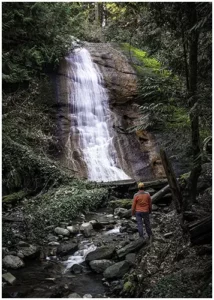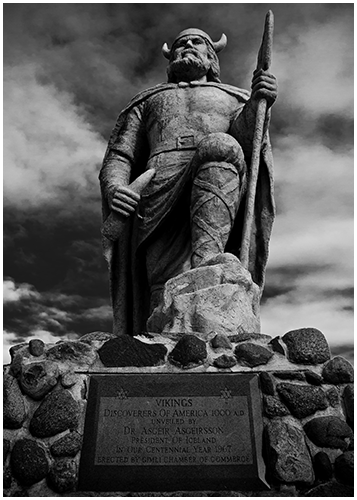
The Charming Northfield Falls in the Heart of Beach Estate Park
Looking to kill off an hour while in Nanaimo, BC? Just a short hop-skip and


Explore the vibrant world of black and white photography with a spotlight on a game-changer – colour filters in photography. In the fascinating evolution from film to digital, coloured filters have stood the test of time as invaluable tools. Whether you’re using a digital camera or shooting with film, you can enhance your creativity by using coloured filters. Explore the wide range of filters that can enhance your photos and make your visual storytelling more dynamic.
Key Takeaways
As a photographer, I’ve seen firsthand how colour modifiers can dramatically enhance your black and white photography. When I use a lens filter, it’s like speaking the language of light, using colour as my dialect. Different filters used with colour not only affect the aesthetic but also play with emotions and moods. Take filters that affect image contrast and tones, for instance. Adding a red filter makes the blue sky appear dark and dramatic, which enhances your landscape photos.
But filters are not all about drama; when shooting portraits, some use a yellow filter. The filter improves skin tones and brings out the character in the subject’s features. Working with filters used in black and white photography teaches you a lot about light and its intricacies. It’s a lesson in how different filters are used to suppress or amplify elements of the visible spectrum.
Digital photography uses coloured modifiers to address practical challenges, such as reducing glare with polarizing filters or controlling exposure with neutral density filters. Filters help me extend exposure times, creating a silky water effect in waterfall photography. It’s amazing to see how the scene changes when I add filters.
Let’s embark on a journey through the myriad filters at our disposal. Each filter type serves a unique purpose. From imparting subtle or profound changes to the photograph.
In black and white photography, coloured filters can have a profound impact. A red filter dramatically darkens blues, yielding a striking contrast against the sky. An orange filter makes the sky darker with a softer effect, while a yellow one darkens blues and lightens skin tones.
On the other hand, a green filter can lighten foliage, creating a pleasing contrast with the sky. A technique often used in landscape photography. Lastly, the use of a blue filter typically adds a cooling effect, shifting the colour temperature of your shots.
Let’s review the function of a polarizing filter: It diminishes glare and reflections, enhances blue skies, and augments colour saturation, rendering it essential for landscape photography.
The Gold-N-Blue polarizer can change the colour of polarized light to blue or gold, creating a range of effects from subtle to bold. It works well in various lighting conditions, including dim lighting and bright sunny days. It is particularly captivating when used for scenes involving water. When shooting B&W rely on the Gold-N-Blue for the striking tonal contrast it produces.
Unlock the potential of your scenic shots with Graduated Color Density Filters. Here’s why you’d want to incorporate these filters into your kit:
I’ve discovered that using black and white filters can dramatically reshape the narrative of monochrome images. I’ll guide you through how filters affect image shades and how monochrome settings can help visualize in black and white.
Let me share with you an insider’s guide to colour filters. When shooting in black and white, filters become your paintbrush, altering light and shadow to emphasize contrast and tonality. Imagine capturing the perfect black and white portrait. A yellow filter darkens the skies ever so slightly and illuminates the skin tones, making your subject stand out. Black-and-white film enthusiasts often reach for these filters to enhance textures and depths that colour may otherwise obscure. Filters can bring out hidden details or tone down overpowering elements, helping create more meaningful visual stories.
Transitioning into the digital realm, digital cameras have embraced the tradition of monochrome photography with innovative features. Use the monochrome mode in your camera to check how your scene looks in black and white before taking a photo. This mode is usually found under settings such as Picture Style, Picture Control, or Film Simulation. This immediate feedback is invaluable for refining contrast settings and composing shots that thrive on tonal variation. Change the camera settings to create different filter effects, showing the world in various shades, from cold silver to deep black. Using black and white mode enhances your ability to notice details and increases the intricate world of black and white photography.
As an avid photographer, I’ve learned that achieving visually stunning outcomes often involves using colour modifiers. Filters enhance or mute hues to craft the desired atmospheric effect. It’s mastering these subtleties of colour modifiers that elevate your photos.
Instead of making adjustments after taking a photo, you can use a filter to see real-time changes. Mounting the filter directly onto the lens allows you to see how it will affect your image before you take the photo.
Colour filters are essential in photography and play a key role in shaping the visual story. I have access to a variety of colour modifiers for photography. Each filter has its own unique effect on exposure and desired outcomes. Using color filters makes the blue of a twilight sky deeper, and lens filters can reduce glare to show subtle details. Understanding and using these tools strategically enriches my photographs.
The versatility offered by colour modifiers is simply unmatched. Use different filters on your camera to create different effects. Each filter changes how the scene is interpreted. A filter in B&W photography enhances tones to create contrast, giving the image a more emotional impact. Using a strong filter guide and practising colour filter techniques can help create powerful and authentic images.
The creative landscape of photography is continually expanding, and filters offer a channel through which I can express my vision with clarity and flair. As I integrate these myriad hues and effects into my craft, it becomes apparent that photography techniques with filters are not just technicalities; they are the strokes of a painter’s brush on the canvas of light. And so, in the pursuit of artistic excellence, adding filters to a camera is not a mere step—it’s a leap into a world where every snapshot is an opportunity to captivate and leave a lingering impression.
Mastering colour filters in photography is crucial for enhancing image quality. Photographers can use these filters to adjust tones, fix colour casts, and create unique effects to enhance their photos.
Color filters on camera lenses impact the final image by selectively altering tones and hues. They improve contrast, adjust colour balance, and add creative effects for photographers to create specific moods and emphasize elements in their photos.
Certainly! In photography, various colour filters serve a distinct purpose. Examples include warming filters, enhancing red and orange tones, and cooling filters, which emphasize blues. Creative filters, like graduated colour density filters, add artistic flair. Understanding these types empowers photographers to manipulate colours and elevate their visual storytelling.
Colour filters in B&W photography transform images by enhancing contrast and tonal range. They add depth and mood, making certain elements stand out. By selectively altering how colours translate to shades of grey, these filters bring a nuanced dimension to monochrome compositions.
Using a camera’s monochrome mode when taking black and white photos improves contrast, sharpens details, and gives a real-time preview, making it easier for photographers to create powerful images.
The filter factor refers to the degree by which a filter blocks light entering the camera. It is crucial for calculating exposure settings. Different filters have different filter factors, and failing to account for them can result in under or overexposed images. Consulting a colour filter guide can help you understand the specific filter factors associated with each colour filter you use.

Looking to kill off an hour while in Nanaimo, BC? Just a short hop-skip and

Photography can be a fulfilling and enjoyable hobby that brings a creative outlet to your

Welcome to our guide to Photoshop tutorials for beginners: A Complete Beginner’s Tutorial for Learning